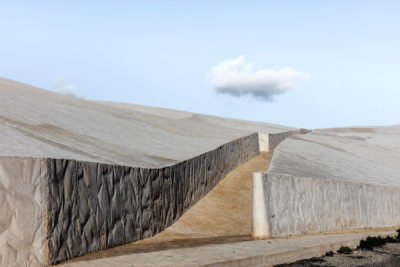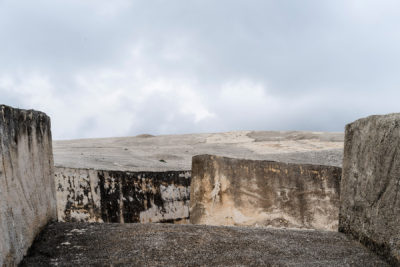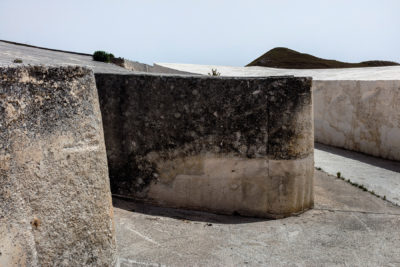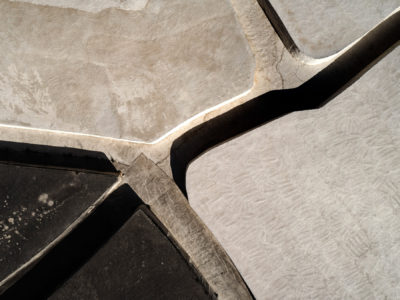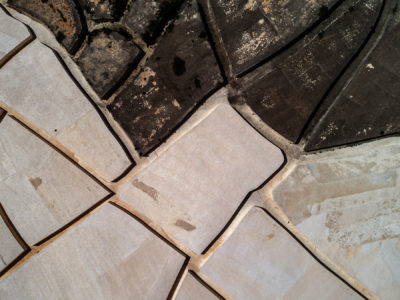The Huge Cretto
Fifty years after the earthquake in Belice, the Sicilian photographer Massimo Siragusa couldn’t resist to go back to one fascinating location of his birthplace. He went to take photos of the Cretto by Burri, which was built to replace the town of Gibellina, destroyed by the earthquake in 1968. The artist idea was to use the debris of the village, compressing them as reinforced concrete and transform them into the biggest land-art of the word. Starting from the first 70’s, Burri had realized crettos in smaller dimensions, recalling the wrinkles of terrain in the countryside when the dry season gets to its peak. At Gibellina he made one giant as a huge shroud.
“When I went to visit the place, in Sicily, the new village had almost been rebuilt and it was full of artworks. I said to myself, I am not doing anything here, let’s go where the former village was, 20 km away. A winding road, burned by the sun, drew us down toward the inland until we got to a mass of ruins, in the middle of a desert and desolated land. I got really shocked. I almost wanted to cry and I got the idea (…) – I would do this: let’s compact the debris, which are a problem anyway, strengthen them, and with this concrete make an immense white cretto, so that it will last forever as a memory of what happened here. There we go!” (Alberto Burri, 1995)
In Gibellina, instead of the streets the photographer finds the cracks, reproducing the texture of the former city, with those surfaces so white and so earthy under the sun. Siragusa touches the Cretto softly by means of his eyes and his peculiar photographic technique, which can eliminate any extra shadow and celebrate light. The approach is the one of a traveller, of a man walking and listening to his own breath: we feel his emotion while he tells us about the experience he made out of it, as a journey through matter, or through magic, pain and time.
Here is what Massimo writes about his arriving on place: “it appears all of a sudden, immediately around the corner along the road. It’s a vision impressive and surreal. A bed sheet laying on the green surface of the hill. Burri transformed a tragedy into art”. Furthermore “In the Cretto you experience a sort of crystallisation of memory and pain. There comes out like a footprint, a shroud on the ruins of that little village. It is pure magic and in that magic the photographer stops to listen to the wind going through the creases of the matter. For him the Cretto becomes architecture, monument, dream. It is rough and porous, exposed to the weather, it shows the passing years, it has lost his whiteness, leaving the wrinkles add to its roughness and the plants grow where the concrete slightly broke. “Cretto is time. A time frozen, but strongly felt. The passing years created wounds in the matter”. Also on this aspect of almost living matter, Massimo seems to have a participating eye, full of emotion, wanting to touch those shapes and deeply falling into memories.
